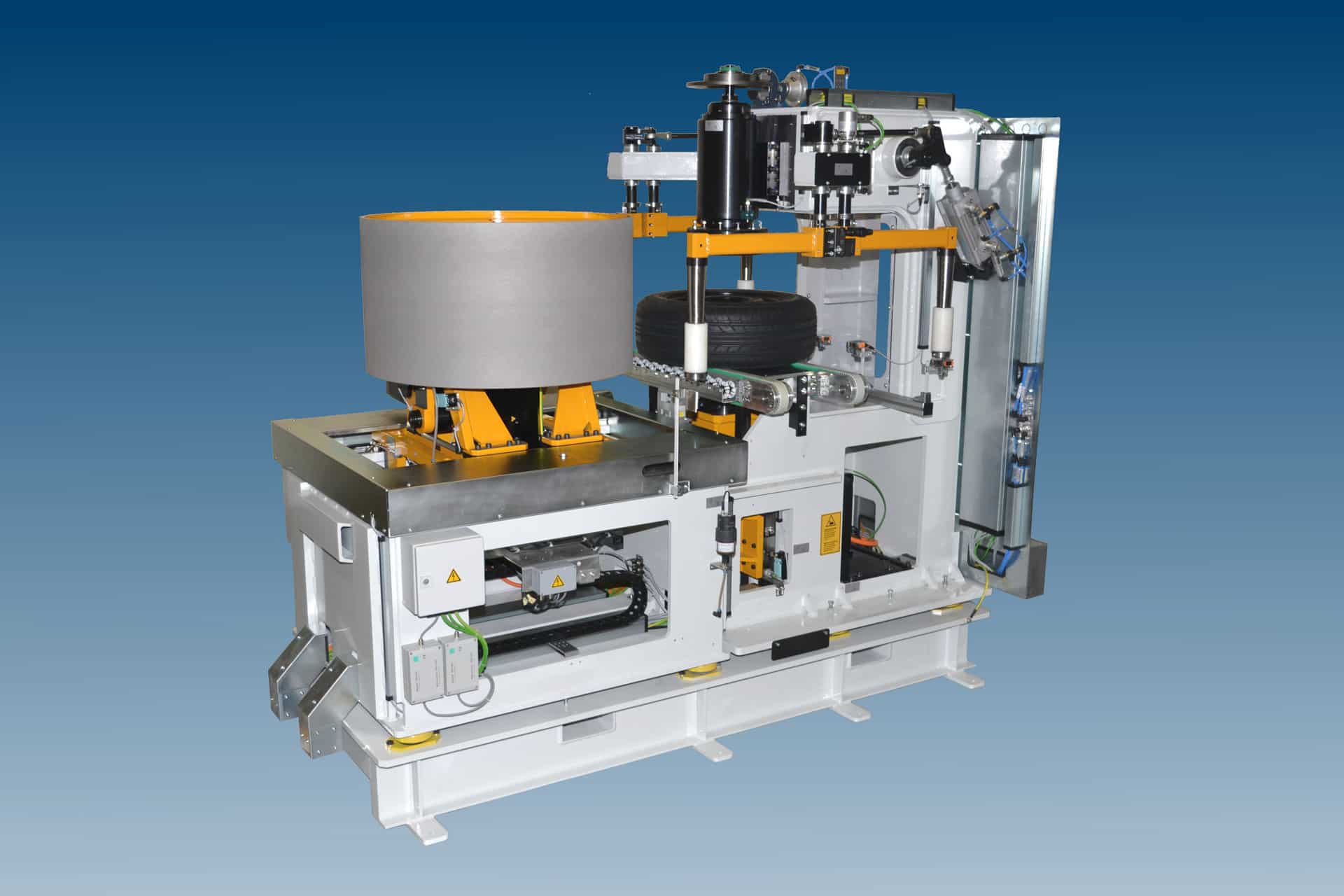
Measuring technology for complete wheels
DOT
DOT recognition system
The inmess DOT recognition system is able to detect the tire DOT-code even under difficult production conditions, allowing a very high recognition rate to be achieved.
DOT recognition system
The inmess DOT recognition system is able to detect the tire DOT-code even under difficult production conditions, allowing a very high recognition rate to be achieved.
DOT-Recognition System (DOT)
The DOT recognition system is used for automated recognition of the DOT coding on tire sidewalls, consisting of the “Tire Identification Number” (TIN) and the “Date of Manufacturing” (DOM). This coding consists of letters and numbers according to the DOT specification and describes the tire type, the production location and the production date.
In a fully automated process based on laser-based 3D measurement technology, the DOT recognition system finds the coding and reads the corresponding characters for a target/actual comparison of the TIN and for reading the DOM.
inmess GmbH . Europaallee 7
28309 Bremen/Germany
Fax +49(0)-421-489909-25
inmess GmbH . Europaallee 7 . 28309 Bremen/Germany
T +49(0)-421-489909-0 . Fax +49(0)-421-489909-25 . sales@inmess.de
inmess GmbH . Europaallee 7
28309 Bremen/Germany
Fax +49(0)-421-489909-25
Copyright by inmess GmbH 2020 | Legal Info | Privacy Policy